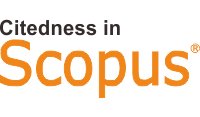The Influence of Image on Staycation Intention at Dusun Bambu Ecolodge
DOI:
https://doi.org/10.35313/jtospolban.v4i2.120Keywords:
Ecolodge, Staycation, Image, IntentionAbstract
The image of a destination significantly impacts tourists' experiences and intentions, particularly in the hospitality and tourism industry. This study examines how the image of Dusun Bambu Ecolodge influences tourists' intention to engage in staycations. Using a quantitative approach, data were collected through questionnaires distributed to 105 respondents who had experienced a staycation at the ecolodge. The analysis employed descriptive and verification statistical techniques, including simple linear regression. The findings reveal that image positively and significantly influences staycation intention, with a correlation coefficient of 0.662 and a determination coefficient of 41%. This indicates that the image variable can explain 41% of the variation in staycation intention, while other factors influence the rest. These results underscore the importance of maintaining and enhancing a positive image to boost staycation intentions. The study highlights practical strategies, including optimizing digital marketing and leveraging social media to promote engaging content and positive visitor experiences. This research contributes to understanding how destination image drives tourist behaviour, offering valuable insights for ecolodge operators and stakeholders in the sustainable tourism sector.
References
Adriadi, M. R., & Lestari, F. (2021). The effect of advertisements and discounts on the interest in staying in dusun bambu during the covid-19 pandemic. Marketing Management, 2(1), 27–35. https://doi.org/10.24036/mms.
Arieza, U. (2023). Dusun Bambu Lembang: Harga Tiket, Jam Buka, dan Fasilitas. Retrieved May 25, 2024, from KOMPAS.com website: https://travel.kompas.com/read/2023/07/27/232851627/dusun-bambu-lembang-harga-tiket-jam-buka-dan-fasilitas?debug=1&lgn_method=google&google_btn=onetap
BPS, B. P. S. (2022). Tingkat Hunian Kamar Hotel Bintang Indonesia.
BPS, B. P. S. (2023). Tingkat Hunian Kamar Hotel Bintang Indonesia.
Ghaith, A. … Qoura, O. (2019). Profiling of Egyptian Eco-lodge Guests. International Journal of Heritage, Tourism and Hospitality, 13(2), 54–69. https://doi.org/10.21608/ijhth.2019.92751
Gunasekaran, N., & Anandkumar, V. (2012). Factors of Influence in Choosing Alternative Accommodation:A Study with Reference to Pondicherry, A Coastal Heritage Town. Procedia - Social and Behavioral Sciences, 62, 1127–1132. https://doi.org/10.1016/j.sbspro.2012.09.193
Kara, N. S. (2024). The role of celebrity involvement in influencing domestic tourists ’ intention to visit Tanzania ’ s attractions : attitude as a mediating variable. https://doi.org/10.1108/IHR-05-2023-0031
Kesumadewi, P. D., & Pertiwi, A. M. (2023). Faktor Penentu Keputusan Wisatawan Domestik Dalam Memilih Akomodasi Di Desa Wisata Canggu Sebagai Tempat Staycation. Jurnal IPTA, 11(2), 1. https://doi.org/10.24843/ipta.2023.v11.i02.p01
Konecnik, M., & Gartner, W. C. (2007). Customer-based brand equity for a destination. Annals of Tourism Research, 34(2), 400–421. https://doi.org/10.1016/j.annals.2006.10.005
Lee, S. J. … Petrick, J. F. (2017). An Integrated Model of Pop Culture Fans’ Travel Decision-Making Processes. Journal of Travel Research, 57(5), 687–701. https://doi.org/10.1177/0047287517708619
Lien, C. H. … Wu, K. L. (2015). Online hotel booking: The effects of brand image, price, trust and value on purchase intentions. Asia Pacific Management Review, 20(4), 210–218. https://doi.org/10.1016/j.apmrv.2015.03.005
Mic, M. (2017). Exploring branding opportunities for the ecolodge market.
Muritala, B. A., Lara, A. B. H., & Rebull, M. V. S. (2022). COVID-19 staycations and the implications for leisure travel. Heliyon, 8(10). https://doi.org/10.1016/j.heliyon.2022.e10867
Nalendra, M. … Febrianty, A. D. (2023). Market Insight 2023: International and Domestic Tourist Persona Toward Tourism Recovery and Sustainability. First Edition. Wise Steps Consulting.
Nowacki, M., & Niezgoda, A. (2019). Identifing the destination image and its attributes: The case of Central and Eastern European cities. Prace Naukowe Uniwersytetu Ekonomicznego We Wrocławiu, 63(8), 118–127. https://doi.org/10.15611/pn.2019.8.09
Palguna, I. K. A., Wijaya, N., & Dewi, N. (2021). Persepsi Dan Motivasi Wisatawan Staycation Berkunjung Ke Desa Batur Kintamani Di Masa Pandemi Covid-19. Jurnal IPTA, 9(2), 235. https://doi.org/10.24843/ipta.2021.v09.i02.p02
Plidtookpai, N., & Yoopetch, C. (2021). The electronic word-of-mouth (Ewom) trustworthiness, brand image and other determinants of purchase intention of the middle class to luxury hotel services. Kasetsart Journal of Social Sciences, 42(1), 61–68. https://doi.org/10.34044/j.kjss.2021.42.1.10
Pratiwi, I. C., & Novani, S. (2022). Examining Factors Influencing People’S Intention To Staycation During Covid-19: an Extended Model of Goal-Directed Behaviour. Tourism and Hospitality Management, 28(2), 361–380. https://doi.org/10.20867/thm.28.2.7
Putri, E. S., & Nuralam, P. (2024). The Effect of Marketing Mix 7P on Visit Intention Eco-Tourism at Seloliman Mojokerto. Jurnal Administrasi Bisnis, 18(1), 86. https://doi.org/10.21776/ub.profit.2024.018.01.7
Satyarini, N. W. M., Rahmanita, M., & Setarnawat, S. (2017). The Influence of Destination Image on Tourist Intention and Decision to Visit Tourist Destination (A Case Study of Pemuteran Village in Buleleng, Bali, Indonesia). TRJ Tourism Research Journal, 1(1), 81. https://doi.org/10.30647/trj.v1i1.10
Sekaran, U. (2003). Research Methodds For Business Fourth Edition. For Business Fourth Edition.
Shin, H. R., & Choi, J. G. (2021). The moderating effect of ‘generation’ on the relations between source credibility of social media contents, hotel brand image and purchase intention. Sustainability (Switzerland), 13(16), 11–13. https://doi.org/10.3390/su13169471
Slabbert, E., & Martin, S. (2017). Aspects influencing the cognitive, affective and conative images of an arts festival. African Journal of Hospitality, Tourism and Leisure, 6(2), 1–16.
Sugiyono. (2018). Metode Penelitian Kuantitatif Kualitatif dan R&D. In Analytical Biochemistry (Vol. 11).
Suhartanto, D. (2020). Analisa Data untuk Riset Bisnis: SPSS, AMOS, PLS edisi 2. In Bandung: Politeknik Negeri Bandung (Vol. 11).
Thendeano, C. R., Sutanto, J., & Kristanti, M. (2020). Analisa Pengaruh Citra Merek Dan Potongan Harga Terhadap Minat Menginap Di Hotel Shangri-La Surabaya. Jurnal Hospitality Dan Manajemen Jasa, 8(2), 35–51.
Yang, S., Isa, S. M., Yao, Y. & Xia, J. (2022). Cognitive image, affective image, cultural dimensions, and conative image: A new conceptual framework. Front. Psychol. https://doi.org/10.3389/fpsyg.2022.93581
Downloads
Published
Issue
Section
License
Copyright (c) 2024 Cyrilla Pratania Humaira, Syifaa Novianti

This work is licensed under a Creative Commons Attribution-NonCommercial-ShareAlike 4.0 International License.



.png)

















